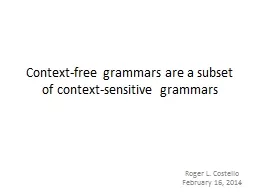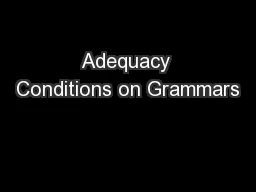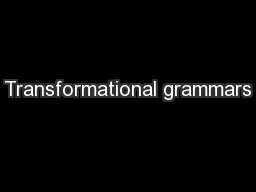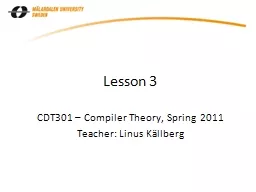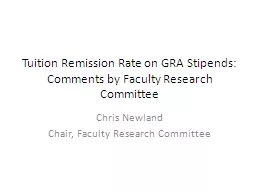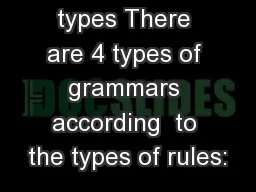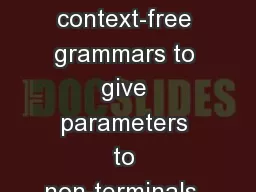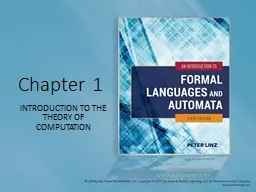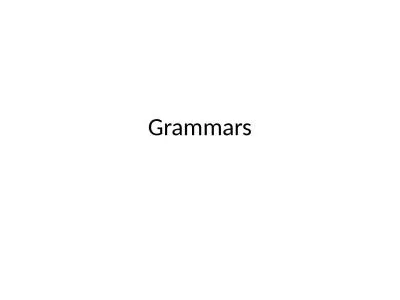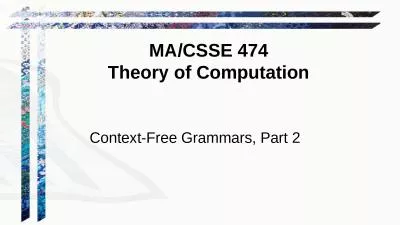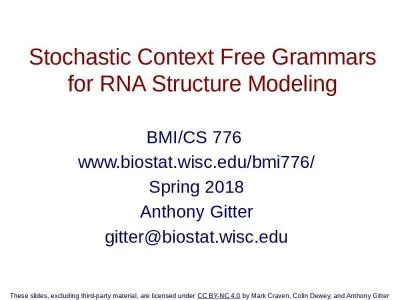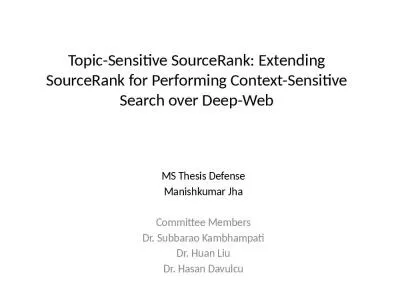PPT-Context-free grammars are a subset of context-sensitive gra
Author : min-jolicoeur | Published Date : 2015-11-14
Roger L Costello February 16 2014 1 Objective Show that Type 2 is a subset of Type 1 2 Grammars a brief refresher A grammar is a concise way to specify a language
Presentation Embed Code
Download Presentation
Download Presentation The PPT/PDF document "Context-free grammars are a subset of co..." is the property of its rightful owner. Permission is granted to download and print the materials on this website for personal, non-commercial use only, and to display it on your personal computer provided you do not modify the materials and that you retain all copyright notices contained in the materials. By downloading content from our website, you accept the terms of this agreement.
Context-free grammars are a subset of context-sensitive gra: Transcript
Download Rules Of Document
"Context-free grammars are a subset of context-sensitive gra"The content belongs to its owner. You may download and print it for personal use, without modification, and keep all copyright notices. By downloading, you agree to these terms.
Related Documents

